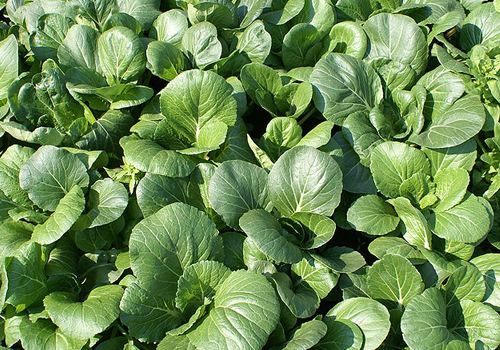Differences between bok choy and napa cabbage
Bok choy and napa cabbage are merely two dishes but often spoken of together. Where one is discussed about, it is seldom the case that the other is not mentioned due to a number of ways that the two are similar. The flavour and the cooking methods used are quite similar in both and for some people, the two continue to be the same despite their differences.
Bok choy, which is actually named brassica chinensis scientifically, falls under the classification of cabbage. It hardly resembles other cabbage dishes around the world. The Chinese refer to it as white vegetable or white cabbage. It has white stalks that resemble celery but without the stinginess and also has dark green and crinkly leaves like Romaine lettuce. It was introduced to Europe in the 19th century and is now widely available in supermarkets and departmental stores throughout the North of America. It is also very popular in Philippines.
Napa Cabbage is also a Chinese recipe and is also called Chinese cabbage. It originated near the capital of China, Beijing. Currently it is popular all over East Asia in particular and around the world for that matter. The name ‘napa’ originates from regional Japanese in which refers to the leaves of vegetables, especially those leaves that are edible.
Both of these dishes are referred to as Chinese cabbage/vegetable but have some considerable differences. In terms of appearance, napa cabbage has a lighter shade of green colour whereas its counterpart has a darker shade. Napa cabbage resembles the Romaine lettuce as well as the Swiss chard. Bok choy, on the other hand, resembles just Swiss chard and resembles it more than napa cabbage due to its dark green leaves and pale green stalks. They also have different textures.
The two differ with respect to their flavour and their effects on one’s taste buds. In simple words, napa cabbage has a lovely mild flavour in addition to a peppery kick which makes it ideal for using in salads or as stir-fries. Bok choy however, has a mild to strong flavour that is more like the flavour of simple cabbage. The green leaf has a taste similar to spinach whereas the white stalk has a nutty flavour. It will make the perfect meal provided that a little sesame oil and soy sauce are added.
To cook bok choy, the leaves have to be separated first from the stalks (especially the thicker ones that take longer to cook). They then have to be rinsed and drained. The leaves are cut or shred and stalks are cut into small slices. It is stir-fried and salt and water are added to it. Fresh ginger and sesame oil can be added to further add to its flavour. To cook napa cabbage, the core is first cut and washed. It is then cooked in a similar way to cabbage. The lower part is to be cooked first and the leaves are added halfway through the cooking time. The raw leaves are to be grated. This more or less completes the cooking after which it can be served.
In many places in the world, napa cabbage is replaced by bok choy. Due to the slight difference in taste and preparation, this is possible and acceptable to most. However, one must remember that bok choy is more time-consuming to cook. Not only is the process longer when bok choy is being prepared, the cooking time required by the ingredients is also more than napa cabbage.
Summary of differences expressed in points
1. Bok choy-named brassica chinensis scientifically; ‘napa’ originates from regional Japanese in which refers to the leaves of vegetables, especially those leaves that are edible
2. Bok choy- introduced to Europe in the 19th century, popular and available in North of America, Philippines; napa cabbage- originated near the capital of China, Beijing
3. Appearance-napa cabbage-lighter shade of green colour; bok choy-darker shade
4. Napa cabbage-resembles Romaine lettuce and Swiss chard; Bok choy resembles Swiss chard only
5. Flavour-napa cabbage-lovely mild flavour, a peppery kick which makes it ideal for using in salads or as stir-fries; Bok choy-mild to strong flavour that is more like the flavour of simple cabbage
6. Cooking bok choy –leaves separated from stalks, rinsed and drained, cut or shred and stalks are cut into small slices, stir-fried, salt and water added; napa cabbage-core cut and washed, cooked in a similar way to cabbage, the lower part is to be cooked first, leaves are added halfway through the cooking time, raw leaves are to be grated
7. Bok choy more time-consuming to cook than napa cabbage
- The difference between Royal icing and Buttercream icing - March 22, 2015
- Difference between stuffed and deep dish pizza - March 21, 2015
- Difference between Crane and Heron - March 20, 2015
Search DifferenceBetween.net :
Leave a Response
References :
[0]http://upload.wikimedia.org/wikipedia/commons/thumb/5/58/Bok_Choy.JPG/220px-Bok_Choy.JPG

